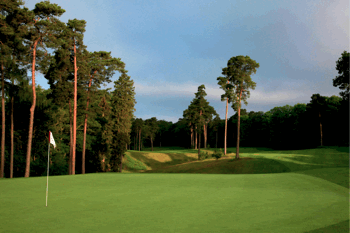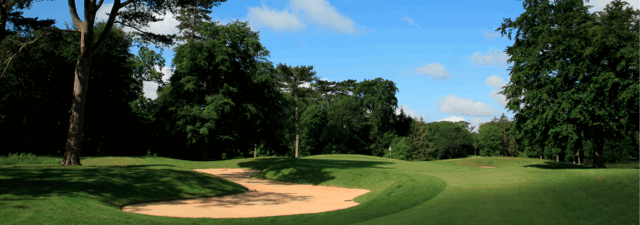Woburn Marquess Review
 Woburn Golf Club is one of the most prestigious golfing venues in England, so my expectations were high before setting off up the M40. That said, many such venues fail to live up to their billing, so I was careful to manage my own expectations whilst retaining a sense of quiet optimism. Five minutes after arriving, though, it became clear why Woburn had received such effusive praise from all corners of the golfing community. The three courses at this fine resort are wonderfully varied and immaculately maintained, and the clubhouse, pro shop, practice facilities and other amenities are equally as impressive.
Woburn Golf Club is one of the most prestigious golfing venues in England, so my expectations were high before setting off up the M40. That said, many such venues fail to live up to their billing, so I was careful to manage my own expectations whilst retaining a sense of quiet optimism. Five minutes after arriving, though, it became clear why Woburn had received such effusive praise from all corners of the golfing community. The three courses at this fine resort are wonderfully varied and immaculately maintained, and the clubhouse, pro shop, practice facilities and other amenities are equally as impressive.
My mandate was to report on an amateur golf tournament on the famed Marquess’ Course, and it quickly became apparent why this layout had been chosen to welcome the European Tour just two years after opening. In 2001, the Victor Chandler British Masters was switched from the Duke’s to the Marquess’, causing some scepticism within the professional ranks. After one round on the new course, though, any controversy had been well and truly banished. Indeed, Colin Montgomerie, who finished 27th in 2001, said: “This is a great course and a fabulous venue. I have heard praise from caddies, players and spectators alike. It’s a very, very good golf course. I think it’s a real jewel, a real gem.”
The first thing that strikes you about the Marquess’ is its impeccable conditioning and the supreme attention to detail. In truth, I’ve never seen a golf course in such perfect condition; something made even more impressive when you consider there was no professional tournament on the horizon. The course itself winds through majestic ancient forest, and the towering trees and great variation of woodland frame every hole beautifully and tranquilly. The Marquess’ is slightly more undulating than its two counterparts, and the subtle humps and hollows on the fairways make positioning and strategy more important.
The rough isn’t too severe and the fairways are comparatively generous, but you need to be in good position off the tee. The putting surfaces are absolutely superb and extremely quick, and if you find yourself on the wrong side of big borrows and subtle undulations, you’ll really struggle to get down in two. Similarly, if you are putting from above the hole, expect three-putts to be a common feature of your day.
Such is the quality, maturity and variation of the Marquess’ Course that singling out a few holes for extended mention is an arduous task. In my view, the sign of a great golf course is when all the holes would be considered ‘stand-out’ on a lay-out half as prestigious. That statement certainly rings true here, and even if you aren’t playing good golf, you’ll still be hard pushed to find any disparaging words about the golf course. It isn’t just the design of the individual holes, but the way they complement one another and the land they are constructed on.

It’s an extremely peaceful and placid setting, especially when playing (as I did) just before the sun is about to set. Laid out over 200 acres of the most wondrous woodland which straddles the boundary of Bedfordshire and Buckinghamshire, The Marquess’ presents some scintillating views over the rolling terrain that’s so common in this part of the world.
Rather than mention most holes on the course, I’ve decided to single out three of the more special ones: the 7th, the 12th and the 17th.
The par-5 7th is the signature hole on the course and the best par 5 I’ve ever played. The fairway is divided in two halves by a collection of intrusive trees that stand right in the middle of the short grass. If you go right, you’ll have the chance to reach the green in two, but the second is fraught with peril over a huge gulley. If you go left, you’ll need to lay-up, but the landing zone of second shots is undulating and extremely narrow. If you do find this area, the approach is played significantly uphill (and often blind, depending on where you’re hitting from) to a large, undulating green that’s complete with severe undulations and numerous shaved run-off areas. It’s a brilliant risk reward hole and the stunning views from the elevated green make it yet more special.
The 12th is another entirely unique hole. It’s only a short par 4, but water is used originally and creatively to offer various options from the tee. One pond juts into the fairway some 200 yards from the tee and another sits just short of the green, with a stream on the left side connecting both bodies of water. As such, players can either attempt to find the 80-yard patch of fairway or lay-up short of the first pond, leaving a good 160 yards to the green. It’s a distinctive, idiosyncratic and picture-perfect golf hole, and, despite its length, one of the most challenging on the course.
The 17th is the last par 3 on the course and probably the best of a good selection. A large tree guards the left side and a deep bunker sits on the right, some five yards below the level of the green – a two-tiered surface which slopes from front right to back left. A draw is the ideal shape here, but overwork it from right to left and you’ll run down a steep bank and face a blind uphill chip to a green that slants away from you.
Woburn is a truly special place, and the Marquess’ is undoubtedly one of the best courses I’ve ever had the pleasure of playing. It’s presented in flawless condition, and the eclectic mix of holes and special location amid 200 acres of beautiful woodland create a distinctive and genial feel. Wentworth’s West is frequently touted as the finest inland track in England, but as far as I’m concerned, the Marquess’ is better. Granted, I haven’t played the two tracks at Sunningdale, or some of the UK’s other revered inland layouts, but you’d be hard pushed to find a better and more complete course.
Overall, I’d give Woburn’s Marquess’ Course a rating of 9/10.
Related Content:

















